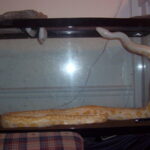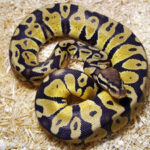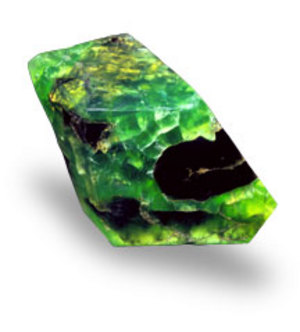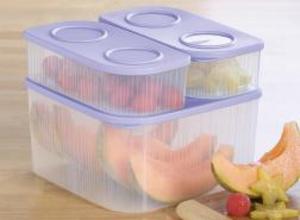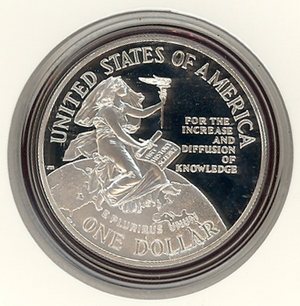Blood pythons are beautiful creatures. Even as they bite me, rip the flesh from my fingers, I still can’t help but wonder at the beauty of their body.
If my first statement struck you as odd, repulsive, crazy, or with any other thought than total agreement, do not get a Blood python. There’s a reason they are referred to as ones initiation test into the Fraternity of Bloody Bandages; they will bite you, and they will like it.
Now, this isn’t meant to scare you off from getting a Blood python. Each one is an individual. Some are docile the moment they hatch, or they are so vicious that they will try to bite you before actually exiting the egg.
Choosing to purchase a blood python is much like playing Russian roulette: you better really be sure it’s a gamble you’re willing to take, because you have no idea what you’re going to get until it’s too late to reverse it.
With that said, if you purchase a Blood as a hatchling, care for it correctly, and hold it frequently, no matter how often it bites you, working with it daily to calm it down, they will usually become ‘dog tame’ after a year or so. Just understand that it’s more of an exception, not the rule.
Do you love snakes? Only love and a little insanity will possess you to own a Blood.
Size
The size of a Blood depends on what kind you get. Borneo Bloods, for example, stay relatively small. The male can be as small as three feet long. I’ve also seen Bloods that near the 10′ mark.
The thing to remember with is that they are very THICK bodied. An average adult female Borneo blood will weight between 30 and 40 pounds. Their girth is massive compared to their length. This girth will have a great impact on the cage you choose, as it will need to be wider than it would for other, thinner, pythons.
A good sized cage would be big enough for the snake to stretch out at least 2/3 of its body; ¾ to its entire body would be better. If a snake is unable to stretch out completely, it will very likely get an RI sometime during its life.
Since Bloods are so thick, they do not climb. It is more important to have a long, wide cage than it is to have a tall cage.
My cage is 5’L x 2’W, and it suits a Borneo just fine. As a general rule, about 8 -12 square feet of floor space it good.
Temperature
A temperature gradient should be provided, so that one side of the cage is the ‘hot’ side, and the other side is the ‘cool’ side. The hot side should be around 88 degrees 90 degree basking area. The cool side of the cage should be around 78 – 80 degrees.
Humidity
Humidity for a Blood Python should be between 50% – 60%. Too little humidity, or too high humidity, will be harmful to your Blood python.
Light
The light periods for a Blood Python should be maintained at 12 hour light/12 hour darkness.
Furniture
Two hides should be provided in the cage. One at the hot side, one at the cool side. A water dish large enough for the snake to submerge itself in is necessary.
Substrate
There are different substrates that can be used. Newspaper is the easiest, as this snake gets wide and heavy, and will usually just mess up any other substrate. Also, news paper is the easiest to clean up feces, and cheap to replace.
Mulch/forest bark is good if you have problems keeping the humidity up. Aspen is a cheap substrate, but hard to spot clean and easily ingested.
Pine and cedar should both be avoided; pine dust will cause lung infections, and cedar oil is toxic to snakes.
Feeding
If you provide adequate hides, good temperatures, and correct humidity, these snakes will readily eat any rodent you swing in their face. Feed them one correctly size rodent (mouse, rat, gerbil, rabbit) once every seven days. The feeder should be no more that 2.5 times the width of the snakes head.
Blood pythons are prone to obesity, because they have a very low metabolism, and very high feeding desire. Adults should be fed every 10 -14 days to prevent obesity.
After feeding the snake, do not handle it for a minimum of 48 hours. I leave mine alone for 3 full days. Handling too soon will result in regurgitation.
Always feed your snake frozen/thawed feeders. Live feeders are dangerous, and have killed more than one snake. The size of prey that an adult will need will have good sized teeth and claws, and will pose a serious threat for your Blood python.
Maintenance
Because of Salmonella, it is necessary to clean the cage thoroughly every 30 days. The risk of getting Salmonella is almost non-existent of the snake is properly cared for and maintained. However, allowing feces to remain in the cage, uneaten food, or soggy substrate will all result in bacterial growth. The feces of snakes is where Salmonella is contracted.
Once a month, remove everything from the cage and scrub it with a 5% bleach/water solution. Dry thoroughly, be sure no fumes are present, replace with clean bedding, and replace snake.
Final thoughts
Blood pythons are amazing creatures. As I said previously, I can’t help but marvel over the beauty of their bodies. They are marvelous creatures, stunning, strong. However, some can be quite aggressive. Wild-caught Bloods will surely bite you with every intent of causing some serious pain. Captive bred, however, is becoming more docile each breeding season. While hatchlings tend to be nippy, it is usually due to fear, not aggression. With proper care and frequent handling, they will calm down.
This snake is not for beginners. For someone who has had limited experience around snakes in general, this will not be a good snake. Humidity and temperature mistakes with this snake will result in illness and possibly death.
If you are unable to read a snakes ‘moods’ and body language, you will frequently get bit. Understanding this snake is most important, and will determine success in taming.
Some good sources for obtaining captive bred Blood Pythons are NERD (New England Reptile Distributor) and Bob Clark (bobclark.com). Both care deeply for their animals, are absolute professionals, and have produced nearly all of the beautiful morphs we have today.

